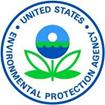Big River Lead Remediation Structure
Scope
Between 1900 and 1972, lead mining operations released large quantities of hazardous mineral mining waste into the Big River. This area is now considered a superfund site containing elevated levels of zinc and lead, which pose a threat to human health and the environment. The project site is located along the Big River in St. Francis County, Missouri where the channel bends to the north just south of Bonne Terre, immediately below the confluence of Flat River Creek.
To assist in the remediation of this region, the U.S. Army Corps of Engineers designed the Big River Lead Remediation Structure (BRLRS) to capture contaminated sediments in specific areas during flood events so that they may later be collected and removed for proper disposal. The structure is composed of two primary parts: (1) a "Newberry Riffle" which locally raises base-level in the channel, decreases channel slope, slows water to drop out sediments, and allows for fish passage, and (2) an excavated basin system within the floodplain on the inside of the bend to pond water and capture contaminated suspended sediments and finer bed sediments during high flows. The degree to which the structure will trap sediment and the effectiveness of the structure to reduce in-channel sediment in the Big River overall has not been evaluated.
Hazardous materials are still present and stored in large quantities in the channel bed and bar deposits, where they can be dispersed downstream through sediment transport processes. Removal of contaminated sediments from the channel and bar deposits may decrease contaminant levels downstream.
Objectives
- Assess and map the “as-built” condition of the completed structure
- Monitor periodically the condition and stability of the constructed basin and riffle as well as the natural channel and bank system within the project reach given the influence of local geomorphic and human disturbances related to structural stability, flood effects, and sediment conditions
- Monitor and quantify the volume, properties, and geochemistry of contaminated sediment trapped behind the riffle structure
- Monitor and quantify the volume, properties, and geochemistry of contaminated sediment deposited within the off-line basin structure
- Evaluate the overall structural integrity and sediment trapping effectiveness of the structure
Partners
U.S. Environmental Protection Agency, Region VII
Funding
U.S. Environmental Protection Agency
